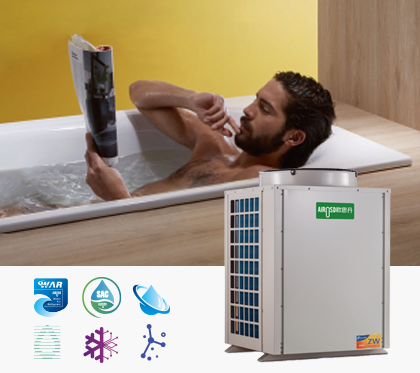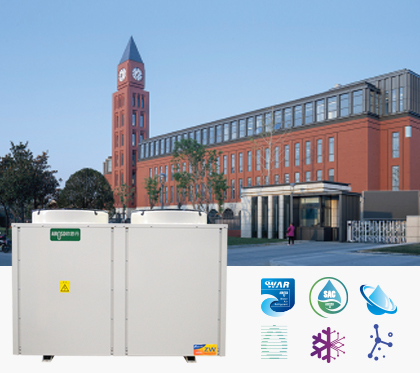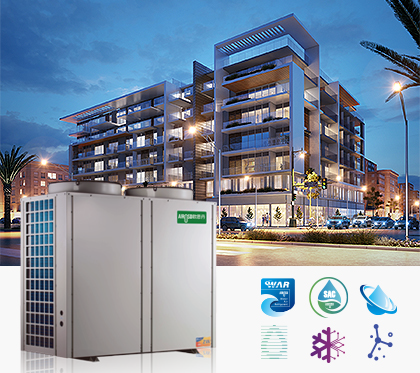Are you contemplating the steps for installing a heat pump in your home? Navigating the installation of a heat pump can seem daunting, but with the right guidance, it's a task that can dramatically increase your home's energy efficiency. Whether you're a DIY enthusiast or planning to consult a professional, understanding the heat pump installation process is crucial. In this comprehensive guide, we'll walk you through the essential aspects of how to install a heat pump system, ensuring you're equipped with the knowledge to make informed decisions for your heating and cooling needs.
Step 1: Selecting the Right Heat Pump for Your Home
The first step in the heat pump installation process is to select the appropriate size and model for your specific needs. This critical decision will be influenced by the square footage of your space, local climate conditions, and unique heating and cooling demands. To ensure optimal performance and efficiency, it's advisable to engage with a seasoned HVAC specialist or conduct thorough research on the latest heat pump technologies. By doing so, you can rest assured that your heat pump installation aligns with industry best practices for energy-efficient home comfort.
Step 2: Selecting the Optimal Location for Heat Pump Installation
With the size and model of your heat pump in hand, the subsequent task is pinpointing the ideal location for both the indoor and outdoor units. The outdoor unit requires a spot that offers protection from direct sunlight and inclement weather, ample air circulation for peak efficiency, and accessibility for future servicing. A sturdy concrete base is also essential to minimize vibrations and secure the unit in place. As for the indoor unit, seek a central location within your home that facilitates balanced airflow and temperature control.

Chinese Heat Pump Manufacturers
Step 3: Installing the Outdoor Heat Pump Component
The installation of the outdoor unit is a pivotal part of the heat pump system setup. Properly securing the unit to the concrete pad provides a solid foundation. Precise connections of the refrigerant lines and electrical wiring are paramount to ensure efficient operation. It's imperative to adhere strictly to the manufacturer's guidelines and utilize the correct tools and safety equipment during this process. A meticulous installation helps prevent future operational issues and lays the groundwork for reliable heating and cooling.
Step 4: Implementing the Indoor Heat Pump Installation
When it comes to installing the indoor unit, the right placement is essential for optimal performance and efficiency. A central location within your home is typically chosen for wall mounting, ensuring even distribution of air and convenient access for routine checks. The unit must be connected to its outdoor counterpart through secure refrigerant lines and reliable electrical wiring. Precise adherence to the manufacturer's installation manual is crucial for a seamless operation and long-term reliability of your heat pump system.
Step 5: Linking the Indoor and Outdoor Units
With both the indoor and outdoor units in place, the pivotal task is to create a seamless connection between them. This critical phase involves carefully attaching the refrigerant lines and completing the electrical circuitry. Due to the intricate nature of this work, which requires a high level of precision and technical know-how, enlisting the expertise of a certified HVAC professional is highly advised. Their proficiency ensures that the system is set up for efficient operation, adhering to stringent safety standards and local regulations.

Heat Pump Water Heater Manufacturer In China
Step 6: Operational Verification and Performance Testing
The culmination of your heat pump installation is the operational verification and performance testing. This final step is more than simply turning on the system; it's a thorough evaluation to ensure everything is functioning as intended. Activate the heat pump and pay close attention to its operation, listening for any irregular sounds and feeling for excessive vibrations. It's crucial to confirm that the system efficiently transitions between heating and cooling modes and maintains consistent airflow in every space. Any discrepancies should be resolved immediately to guarantee your heat pump's optimal performance.
Conclusion
In conclusion, the installation of a heat pump is a multifaceted endeavor that benefits greatly from a detailed approach and professional involvement. While it is possible for a knowledgeable homeowner to undertake parts of this process, the complexity and need for specialized tools often necessitate the skills of a professional HVAC technician. By choosing AIROSD, a reputable wholesale heat pump water heater supplier, you can access a variety of top-tier heat pumps, including sanitary hot water heat pumps, commercial heat pump water heaters, and DC inverter water heater heat pumps. As a distinguished commercial heat pump water heater manufacturer, AIROSD stands ready to be your partner in achieving energy-efficient heating and cooling solutions for your home or business.
FAQs
1: How long does a typical heat pump installation take?
Answer: The duration of a heat pump installation can vary depending on several factors, such as the type of heat pump, the complexity of the installation, and the specific conditions of the site. On average, a straightforward residential heat pump installation might take anywhere from 4 to 8 hours. However, if the system requires additional ductwork, electrical upgrades, or other modifications, the process could extend to 1-2 days. It's best to consult with a professional HVAC technician for a more accurate timeline based on your home's unique requirements.
2: Can I install a heat pump myself, or do I need to hire a professional?
Answer: While some aspects of a heat pump installation might be within the capabilities of a skilled DIYer, it is highly recommended to hire a professional HVAC technician for the job. This ensures that the installation complies with local building codes, manufacturer's specifications, and safety regulations. Professionals have the necessary tools, expertise, and certification to handle refrigerants and electrical connections properly. An improperly installed heat pump can lead to inefficient operation, increased energy costs, and even safety hazards.
3: What should I consider when choosing a location for my heat pump's outdoor unit?
Answer: When selecting a location for your heat pump's outdoor unit, consider the following:
Sufficient Airflow: Ensure there's ample space around the unit for proper air circulation, which is essential for efficient operation.
Shading and Protection: While the unit should be protected from direct sunlight and harsh weather conditions, it also needs to avoid areas where leaves, snow, or ice could accumulate and obstruct airflow.
Accessibility: Choose a location that allows for easy access to maintenance and repairs.
Noise: Consider the noise level of the unit and its proximity to living spaces and neighbors.
Foundation: The outdoor unit should be placed on a level and sturdy base, such as a concrete pad, to minimize vibrations and ensure stability.



